Ireland's Celtic Tiger baby boom might be the most critical factor to the future of Irish politics. After suffering declining fertility in the poor economy of 1980 to 1994, Ireland saw a surge in fertility associated with the growing economy of the Celtic Tiger between 1994 and 2010. Ever since 2010, coincidently the same year the EU/ECB/IMF troika got involved in Ireland, fertility declined. The key insight is that the Celtic Tiger baby boom generation has just started entering adulthood in large numbers. As some of the hardest hit by the housing crisis and other related economic problems, this generation will become increasingly politicalized towards anti-establishment attitudes.
While the oldest are about 30 years old, each subsequent year cohort is larger than the last. The largest grouping are about 15 years old. This means the peak of this generation will be eligible to vote by the next election in 2030. Two aspects will make the youth very influential. One, the older generation will increasingly retire and pass away increasing the youth’s relative share of the population. Two, as the taller end of the youth bulge enters the workforce, there will be ever more youth feeling the pressures of the dysfunctional economy. They won’t just be students, but aggrieved workers. In 2030, the oldest will be 35 years old.
This is a potent combination that makes this youth cohort bigger and angrier. Ironically, as each new yearly cohort enters adulthood and thus the constrained market for housing, employment, and more, they will make it even harder for their overall generation. Each new year brings about more demand and competition. With the bad economic circumstances with no remedies coming from the establishment as a baseline, the youth bulge aging into the future compounds the problems. As the Irish Examiner reported in May of 2025, “56% of gen Z workers and 53% of millennial workers in Ireland live paycheck to paycheck.” These figures were higher than the average of the survey’s overall sample across 44 countries. Eurostat recorded Ireland as the second most expensive country in Europe. If that’s what conditions are like at the beginning of this generation’s entrance into adulthood, then they will only become more exacerbated in the future.
Naturally, this generation will be rightfully aggrieved at an economy and society that are deteriorating. The logical next step would be to point the finger at the establishment ruling parties, with an average age in the Dáil of about 50, for running the country into the ground. Secondarily, the older generation would be blamed for propping up the establishment because of policies designed to increase the income and wealth of the older generation that have already secured their socio-economic stations in life.
Traditionally, the Irish establishment has relied on emigration as an escape valve for discontented citizens. Between 1864 and 1991, 40 percent of those born in Ireland emigrated, according to economist Ray Crotty. In the more recent period of 1986 to 1991, he found the rate to be 49 percent. About one of every two people born in Ireland was driven out. As Crotty wrote, “the failure of almost half those born there to secure a livelihood in Ireland, which has persisted for some 170 years, is the most important manifestation of socioeconomic failure in the Irish case.”
A 2022 RedC and National Youth Council of Ireland (NYCI) survey found that “more than 70% of young people in Ireland aged 18-24 are considering moving abroad for a better quality of life, a new survey has found.” This new generation is falling into the same emigration trap described by Crotty. However, the Irish establishment may not be able to keep the escape valve flowing for two reasons.
One, the entire western world is experiencing similar neoliberal caused economic declines. There are less opportunities for jobs and higher costs abroad. According to outplacement firm Challenger, Gray & Christmas, the American “technology [sector] remains a top sector for cuts amid ongoing disruptions…In May, tech companies announced 10,598 layoffs, bringing the 2025 total to 74,716; that’s up 35% from 55,207 at the same time last year.” Overall, “nearly 100,000 layoffs were also announced — up 47% from last year” in America. The cost of living in New York City, San Francisco, Los Angeles, Boston, and Washington DC are all higher than Dublin. The destinations to escape to are becoming fewer and farther between for young disaffected Irish people.
Two, the Celtic Tiger baby boom’s bulge quickly filling up the void left by the prior low fertility generation, will create a crowding effect. The large size clogs the escape valve. There could be more people entering adulthood each year than are able to emigrate. At a certain threshold, the size of the in-country youth has enough of a network effect to think about alternative ideas to emigration. Emigration has a depoliticizing effect as it removes disaffected people from organizing political change. Why wage an uphill political battle when you get a job in America? The youth crossing the network effect threshold of both size and disaffection inside Ireland has a politicizing effect. If you can’t emigrate, conditions are worse, and all your lads feel the same, what other choice is there but to team up to wage an uphill political battle?
Ireland’s recent baby boom is peculiar relative to the rest of the developed world. Most countries had consistent fertility declines which resulted in a smooth upside down demographic pyramid. This means with each passing year, the average developed country will have more older people and less younger people than they did in the previous year. However, Ireland is unique with its 1994 to 2010 baby boom that created an uneven bulge. Thus, Ireland’s emerging younger generation is a wild card in the context of developed world demographics and the politics shaped by them. From 2025 to 2030, the 15 to 34 age cohort will grow by 10 percent in contrast to the the adjacent 35 to 49 age cohort at negative 8 percent and Under 15 age cohort at negative 6 percent. While those in the above 50 age cohort will grow by an average of 14 percent, the outlier status of the 15 to 34s will prove to be a compelling challenge.
While the old have money and power, the youth have energy. When that energy is stirred by discontent in their ability to forge a life for themselves in Ireland, that aggrieved energy will have a multiplier effect on their size. This can be seen in internal and external case studies. Internally, the Irish-language rap group Kneecap has become one of the most popular music acts in the past few years across the world. The group has an unmistakable youthful, energetic, and rebellious brand. They have also made it a mission to promote Palestinian solidarity. Against the risk averse desires of the gray haired establishment, it’s probable that Kneecap is a large contributor to driving Irish political support for the passage of the Occupied Territories Bill. On 27 May 2025, Kneecap was directly referenced in a Dáil debate on the bill. Indirectly, Kneecap’s highly publicized pro-Palestinian activism to its large audience, especially within Ireland, has shaped the Irish public’s zeitgeist to deepen support for the bill’s passage after its been mired in delays since 2018. The Celtic Tiger baby boom is the Kneecap generation.
Externally, this type of political dynamic revealed itself in the recent New York City Democratic Mayoral primary election. 33 year old Zohran Mamdani ran as a youthful upstart against 67 year old and former New York Governor Andrew Cuomo and variety of older Democrats. Mamdani dominantly won with 43.6 percent of the primary vote compared to Cuomo’s 36.3 percent. Mamdani is a member of the Democratic Socialists of America (DSA) and built a platform around social democratic values. His campaign centered on common sense affordability. He offered voters a vision where the city government takes a more active role to correct the cost of living crisis in New York City, whether through policies like rent freezes or free public transportation. This vision was particularly attractive to the city’s discontented younger generation and it was this cohort that aggressively campaigned for Mamdani.
As amNY reported, “Gen Z and first-time voters played a key role in Mamdani’s primary victory…Of those who voted early in the 2025 New York City primary election, about 40% were under the age of 40, according to data from the NYC Board of Elections. The youth turnout portrayed a ‘substantial surge’ in early voting engagement by young people.” 18 to 34 year olds were 30 percent of the early voters. 25 to 34 year olds were the single biggest cohort of early voters. Spectrum News NY1 also corroborated this by illustrating the surge in the youth’s voter turnout in 2025’s election compared to 2021’s election where older people dominated. Considering that youth voter turnout is typically much lower than older people, the anomalous youth surge is highly significant.
These are but a few measures that allude to the outsized and novel impact Mamdani’s youthful supporters. That impact manifested in other campaign activities which conformed to the previously mentioned multiplier effect. “‘The Mamdani campaign did a really strong push on engaging people through online and digital communications,’ [Jazmin Kay, the founding executive director of 18by Vote, a youth civic engagement nonprofit, now called New Voters] said, noting that Mamdani drew online engagement numbers that were 40 times greater than the Cuomo campaign…‘When young people do turn out, they have the ability to impact elections,’ Kay added. ‘That message in itself, that young people have power, is going to have ripple effects in a variety of different ways throughout, hopefully, New York, the country, and beyond, by demonstrating what young people can do when they turn out and vote’” (amNY).
Through strategic use of social media, aggressive campaigning, and focus on affordability, Mamdani’s youthful campaigners were able to multiply his support. As noted in my previous essay analyzing the primary data, Mamdani generally won the broad middle 60 percent of voters. These were working to middle class people. Inversely, Cuomo’s voters were the very rich and the very poor. It’s clear that Mamdani’s message of affordability connected with wide swath of people that converted into an electoral success. Compact Magazine’s
commented that “If Mamdani sticks to his economic populist pitch, that will be good for his campaign, but also good for democracy and political discourse more broadly, because people want politicians to take them and their basic struggles with the costs of rent, food, and childcare seriously.” Coincidently, like Kneecap, Mamdani rallied popular support around his uncompromising pro-Palestinian values too.Mamdani Won the Broad Middle 60 Percent
In the wake of Zohran Mamdani’s win over Andrew Cuomo in the Democratic NYC primary election, an annoying analysis emerged that diminished the win as a product of rich college educated trust fund brats against the working class.
Ireland’s Celtic Tiger baby boom generation entering adulthood in increasingly larger numbers will make the 2030 national election Ireland’s Mamdani moment. If the youth can leverage their social media savvy and discontented energy, they can likely tilt Ireland’s politics in their favour. What exactly will that look like? All data points to Ireland’s Social Democrat Party (another Mamdani similarity) being the youth’s political vehicle for change.
The following data was sourced from Irish Polling Indicator and RedC. Using the most recent poll of 27 April 2025, Irish 18 to 34 year olds favoured Sinn Féin at 28 percent, Fianna Fáil with 14 percent, and Social Democrats with 14 percent as their top three parties. At first glance, the Social Democrats don’t seem to be leading the pack, while doing well, but when trends are taken into consideration, the wind is in their sails.
Most notably from 2020 to the most recent poll, Sinn Féin trended down, losing 20 percent, while the Social Democrats drastically trended up, gaining 100 percent. Fianna Fáil gained a slight 8 percent while its coalition partner Fine Gael lost 7 percent. Other left wing parties like Labour and the Green Party surprisingly lost 50 percent each while Solidarity/PBP gained 25 percent. Independents lost 14 percent. The biggest outlier was Aontú which gained 150 percent. However, to remove distortions from smaller parties with large relative growth figures due to starting from small base, it will be helpful to compare the growth rates to each party’s size.
In this context, Social Democrats really stand out as party with a large share of the youth vote and high growth rate. Aontú’s smaller size is better reflected in this chart but their growth is nonetheless curious. Fianna Fáil and Solidarity/PBP slightly grew to stagnated. Fine Gael and Independents slightly declined. The most critical losers were Labour and the Green Party seemingly going extinct within the youth cohort. Finally, Sinn Féin, once the ascendant party who marketed to the youth affected by the housing crisis, had a relatively large decline given its size and former trajectory.
In order to further illustrate the youth’s preference, their data can be compared to that of all age groups. The differences in the party share figures between the youth and those of all age groups will reveal a clear leaning. As expected, Social Democrats lead the youth with a plus 7 percent, followed by Sinn Féin with a plus 4 percent, Green Party with plus 3 percent, Solidarity/PBP with plus 2 percent, Aontú and Labour with zero difference, Independents with minus 4 percent, Fianna Fáil with minus 6 percent, and Fine Gael with minus 6 percent. The two dominant establishment parties of Fianna Fáil and Fine Gael are clearly the party bloc of the old while the collection of alternative left wing parties, led by the Social Democrats, are the party bloc of the young.
When plotting the “Youth Minus All Ages” transformation of the party share figures on the Y-axis against polling growth among the youth on the X-axis of the former scatter plot, the Social Democrats drastically stand out even more so. No other party is even close to their territory of high youth leaning and high youth growth. Aontú’s outlier status is reduced. Sinn Féin looks even worse. Finally, the establishment parties appear to falling off the chart as leaning older and not growing.
After examination of this historical and present data, the next step is to forecast 2030’s election. By taking the growth rate of each party’s share from 2020 to 2025 and growing 2025’s figures by it, 2030’s election can be roughly projected. Using a simple past growth rate will certainly be imperfect, but it will still be useful in identifying possible trends.
Among all age groups, Sinn Féin is projected to be the largest party with 30 percent, followed by the Social Democrats with 16 percent, Fine Gael with 16 percent, and Fianna Fáil with 15 percent. It’s fair to exclude the outlier Aontú for it’s unlikely growth rate produced by its initial small size. In this scenario, the big left bloc makes up 46 percent and the establishment bloc makes up 31 percent. Two assumptions are baked in here. One, the establishment parties’ refusal to go into coalition with Sinn Féin because of its past connection to the Troubles. Two, Sinn Féin’s and the Social Democrats’ demonstrated willingness to form a coalition. If the establishment parties can swing their usual marginal coalition partners of Independents, Labour, and the Green Party, they top out at 41 percent. However, all the left bloc needs to do is swing the far left Solidarity/PBP to reach 51 percent. Although Solidarity/PBP faced internal turmoil over it, there are hints that they would form a coalition with Sinn Féin.
When these forecasts are filtered by just the 18 to 34 year olds, more insights can be drawn. Social Democrats jump to first place with 28 percent, followed by Sinn Féin with 22 percent (coming down from 28 percent in 2025), Fianna Fáil with 15 percent, Fine Gael with 12 percent, Solidarity/PBP with 6 percent, and everyone else under 5 percent. Aontú was similarly excluded for its outlier status. Social Democrats clearly dominate the future youth cohort while Sinn Féin will lose traction with them. Together this left bloc comprises 50 percent of 18 to 34 year olds. The key takeaway here is that it is very likely the youthful energy will flow through the Social Democrats. This past May, the Social Democrats introduced a bill to decrease the voting age to 16. If that were too happen, their youth advantage would compound even more. It’s self-evident that the introduction of the bill is signaling their awareness of these trends.
If the growing number of discontented Irish young adults gravitate towards the Social Democrats, use their social media skills, and aggressively campaign/turnout then they will likely create the same multiplier effect that Mamdani had. This multiplier effect could subordinate the once ascendant Sinn Féin to the leadership of the Social Democrats. It could also alter party support not easily forecasted. Could the Social Democrat youthful base consume more Sinn Féin and other parties’ support? Could the next 5 years of young new entrants to the Social Democrats boost their profile and operations? Can the existing Social Democrats adapt to whatever the youth throws at them? It’s difficult to say for certain, but it’s undeniable that the youthful winds are in the sails of the Social Democrats.
The Social Democrats still have challenges. Mamdani won because he prioritized affordability. Economic concerns were front and center. The Irish Social Democrat’s 2024 manifesto’s first page included the sentences, “The Social Democrats want a future where every person can thrive, and every community can flourish. That future starts with getting the basics right: affordable housing, accessible childcare, healthcare when you need it, a clean environment and properly funded disability services.” With “affordable” as leading list item, it would appear they get it. But distractions from this core vision can diminish viability.
Back to Mamdani, many commentators also noted the two subtle byproducts of his strategy. One, the 2010s cultural woke issues were less pronounced. The campaign was more Bernie Sanders than Brooklyn poetry slam. In this regard, it is insightful to highlight leftist economist and politician Yanis Varoufakis’ recent speech at DiEM25’s Brussels Event on 7th March 2025:
“We invested too much in Green Keynesianism, forgetting the timeless lesson that, even when it adopts Keynesianism as a last resort, the ruling class will always ditch it once their bottom line recovers – well before the many taste its fruits. Our Green New Deal was never even adopted, except partially in name. Is it any wonder that, In the mind of the struggling many, ‘green’ became synonymous with even lower living standards?
We also proved unable to liberate people from exploitation, giving them only the freedom to choose their pronouns on our web site – which of course would be fine had it not been so pathetically inadequate in the larger scheme of things. Instead of organising the precariat and auto-workers we ended up organising signifiers, appearing as a self-styled intellectual vanguard enjoying the subversive thrill of an imagined revolution with all the comforts and trappings of a ruling class soiree.”
- Yanis Varoufakis
Varoufakis’ criticism spoke to the reality of an economic last and woke first left that certainly failed to win against Trump in America and extends to political challenges across Europe. What Mamdani proved was that people want their cost of living crises prioritized and solved. The second related subtle byproduct, is that Mamdani wasn’t afraid to speak to people as diverse as former Trump voters. He never wrote them off, validated their concerns, and communicated a better message. To quote from
’s analysis once again:“There were many things that stood out about Mamdani’s approach, especially in comparison with the dominant tone and assumptions of 2010s progressivism. For one thing, he showed no interest in scolding or condemning Trump voters—indeed, he made explicit that he was seeking their votes, something he might have once been denounced for by fellow leftists. The way he framed the interviews made clear that he accepted these voters had legitimate reasons for having voted the way they did and for mistrusting the Democrats, and that he believed these misgivings deserved to be addressed. Moreover, on the most polarizing issue brought up by some voters—the Middle East—the video segments featured no radical anti-Zionist rhetoric and instead focused on the objection that the US government was investing vast resources in conflicts abroad (again, the choice to include mentions of the war in Ukraine as well as Gaza seemed notable) while average Americans were struggling to get by.
Mamdani concluded the video by making clear that he would attempt to appeal to voters as a mayoral candidate on the same grounds that Trump had appealed to them. It was already clear from this that his rhetoric, style, and approach differed from that of progressive Democrats.”
It’s clear that Mamdani reconciled past leftist failures to gain broad appeal as due to a lack of openness and common sense. Most people don’t want to be talked down to or made to feel economically forgotten. Mamdani started a new era of leftist politics by talking with them and centering their economic problems. It is also worth noting the Palestinian connection hovering over Mamdani’s campaign because it has resonance with Ireland’s current leadership on the Occupied Territories Bill. With Ireland so vulnerable to American business pressure, the next 5 years will see lobbying by America for Ireland to reverse those efforts. Mamdani, as Shullenberger and many others have commented on, gained popularity by not bending on this issue. It’s possible that Social Democrats could lose the youth’s energy if they water down their Palestinian stance thinking it is a compromise for attaining power. Palestine’s cause is a deeply felt moral issue but it is also a litmus test. The discontented youth will see the waffling as betrayal and lose motivation.
Finally, the elephant in the room is mass migration in Ireland. It goes without saying that left wing parties are allergic to mentioning any downside of migration however that doesn’t change the reality of where voters are at. The Business Post reported a RedC survey where “75 per cent of people agree with the statement ‘I think the number of refugees Ireland is taking in is now too many’…[They further elaborated that the] scale of the refugee increase has put pressure on housing supply, on health services, on schools, on the tourism sector, on policing, and on other public services.”
Ignoring or talking down to concerns shared by three quarters of the population is simply political stupidity. There are legitimate concerns about poorly managed migration by the state. Many of the same people in that survey also voiced sympathy for migrants left destitute by the failures of the Irish state to accommodate them. There are also legitimate safety concerns. But perhaps most impactful is the overall increase straining the cost of living crises. Many speculated Sinn Féin’s decline was caused by its voters feeling shunned on the migration issue. This may also explain the rise of migration critical Aontú.
The Central Statistics Office (CSO) forecasts a 5 percent or about 250,000 increase of the Irish population by 2030. Considering from 2020 to 2025 grew by 8 percent, it’s probable to expect higher than 5 by 2030. When extending their forecast to 2057, the CSO estimated that 91 to 100 percent of the increase will come from net migration. It’s likely this percentage holds for the near future as well. This means that just as the Celtic Tiger’s baby boom bulge is increasing stress on the Irish economy, an additional couple hundred thousand migrants will enter and compete with the already stressed Irish youth. It’s hard to imagine the emerging discontented youth not wanting a common sense approach to this. As economist David McWilliams wrote, “if we want less strain on the capacity of the country we should limit immigration to some extent because, right now, the pace of immigration largely determines those strains.”
While this issue is usually taken up by the nascent populist right of Ireland, their message in unappealing to voters and are likely to be non-factors as they were in the last election. However, it would seem many Irish people want a compassionate yet realist approach to the issue. The Social Democrats wouldn’t have to look too far. The Social Democrat Danish leader Mette Frederiksen said “the price of unregulated globalisation, mass immigration and the free movement of labour is paid for by the lower classes.” Frederiksen’s leadership has been seen as a reasonable approach to the migration issue while framing it within social democratic lines of affordability and class tension. These are the challenges that, if the Social Democrats don’t overcome, could result in continued status quo rule of the establishment parties.
A future of many discontented young people isn’t a recipe for status quo stability. Wherever the sizable angst flows will surely feel the impact for better or worse. The coming Celtic Tiger baby boom bulge will be a critical factor no matter what. To paraphrase American political advisor James Carville, “it’s demographics, stupid.” With the establishment parties focused on the old and mired in neoliberal ideology that will never fix Ireland’s problems, the optimal conduit for the youth appears to be the Social Democrat party. All the voter data suggests the Social Democrats are the party of the young, now and especially in the future. A combination of effective messaging on affordability and energized campaigning could make the Social Democrats a dark horse in the next election. If the political stars align, the Social Democrats and their youthful base could give Ireland its Mamdani moment in 2030.




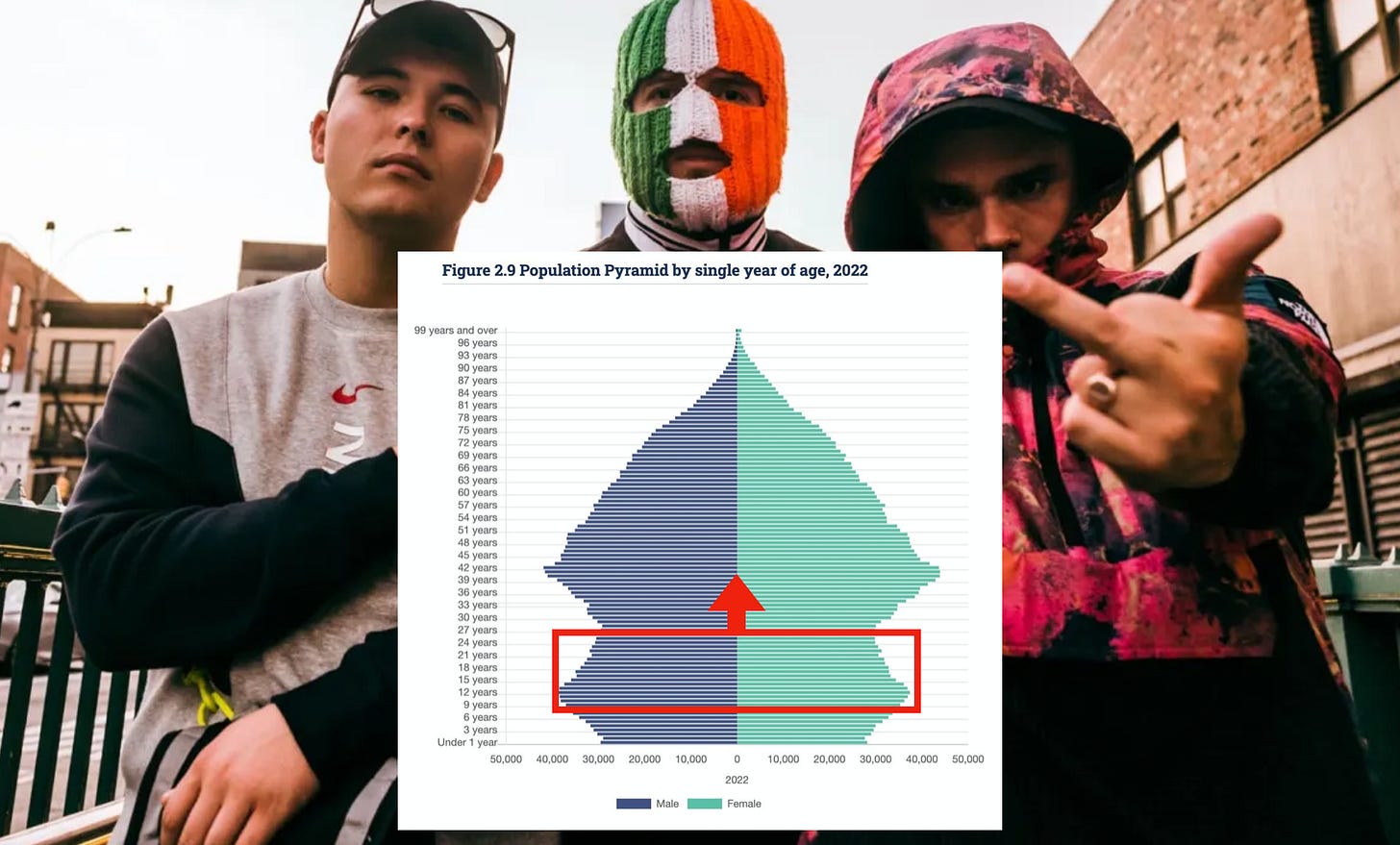
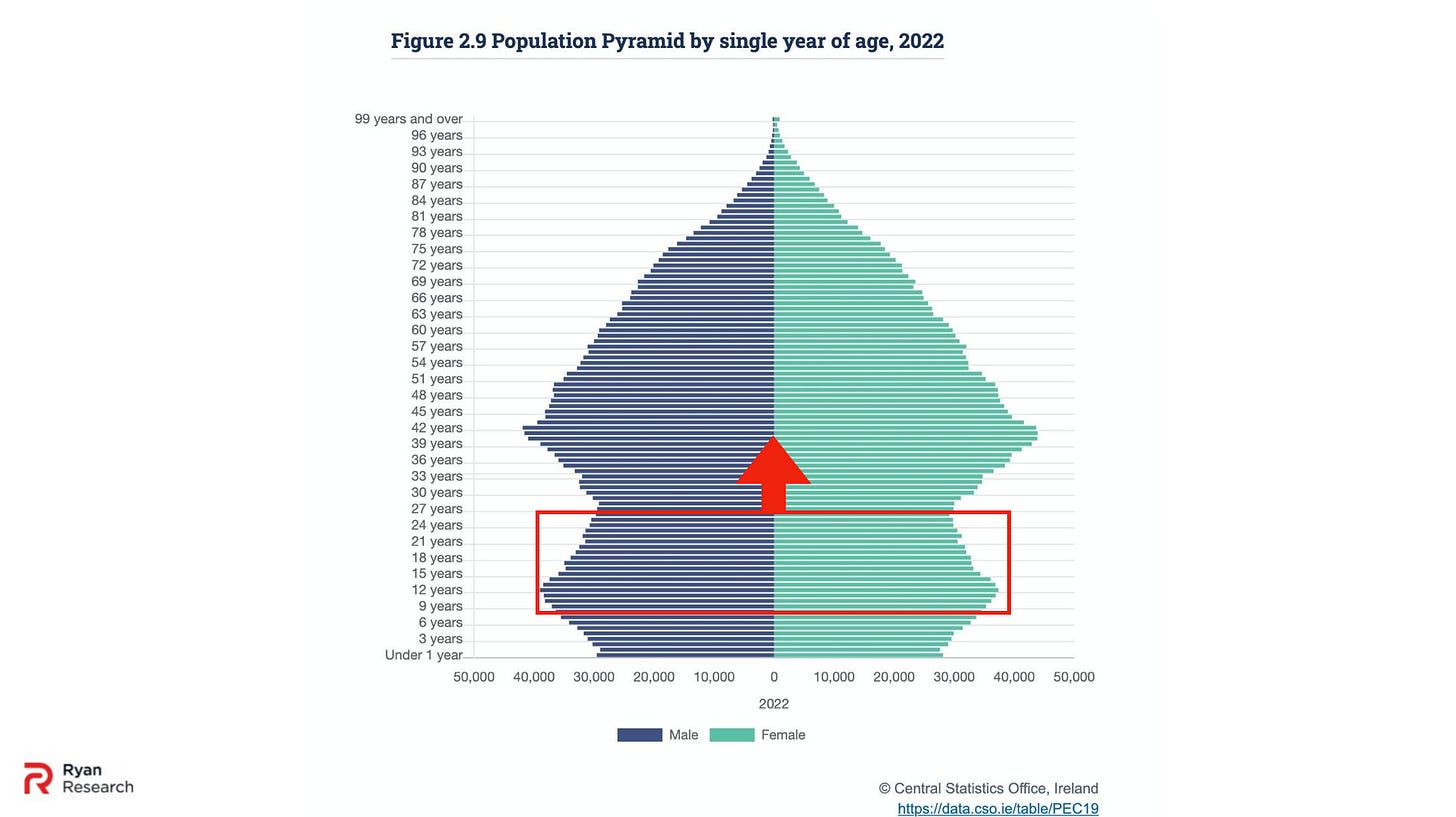
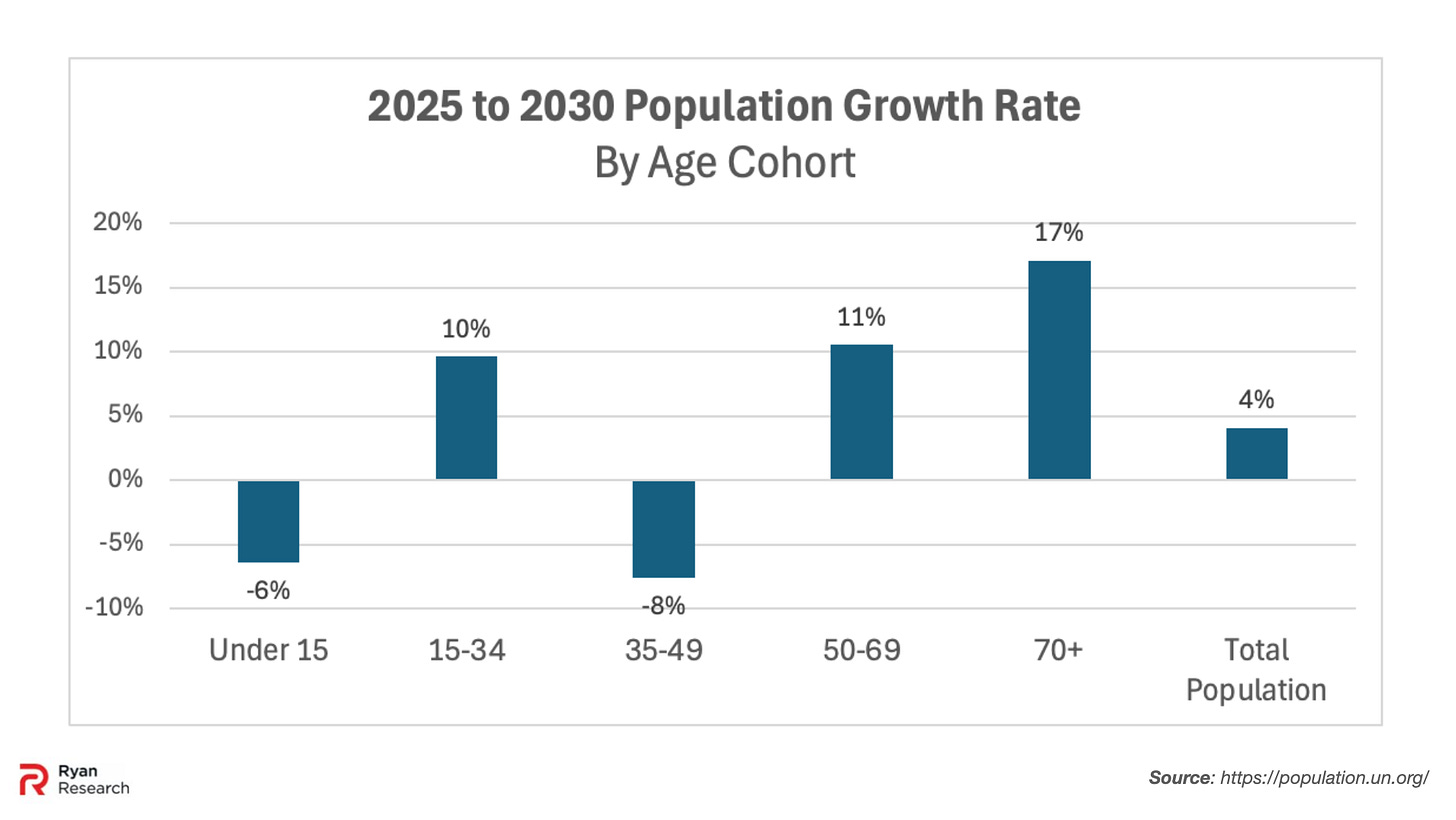
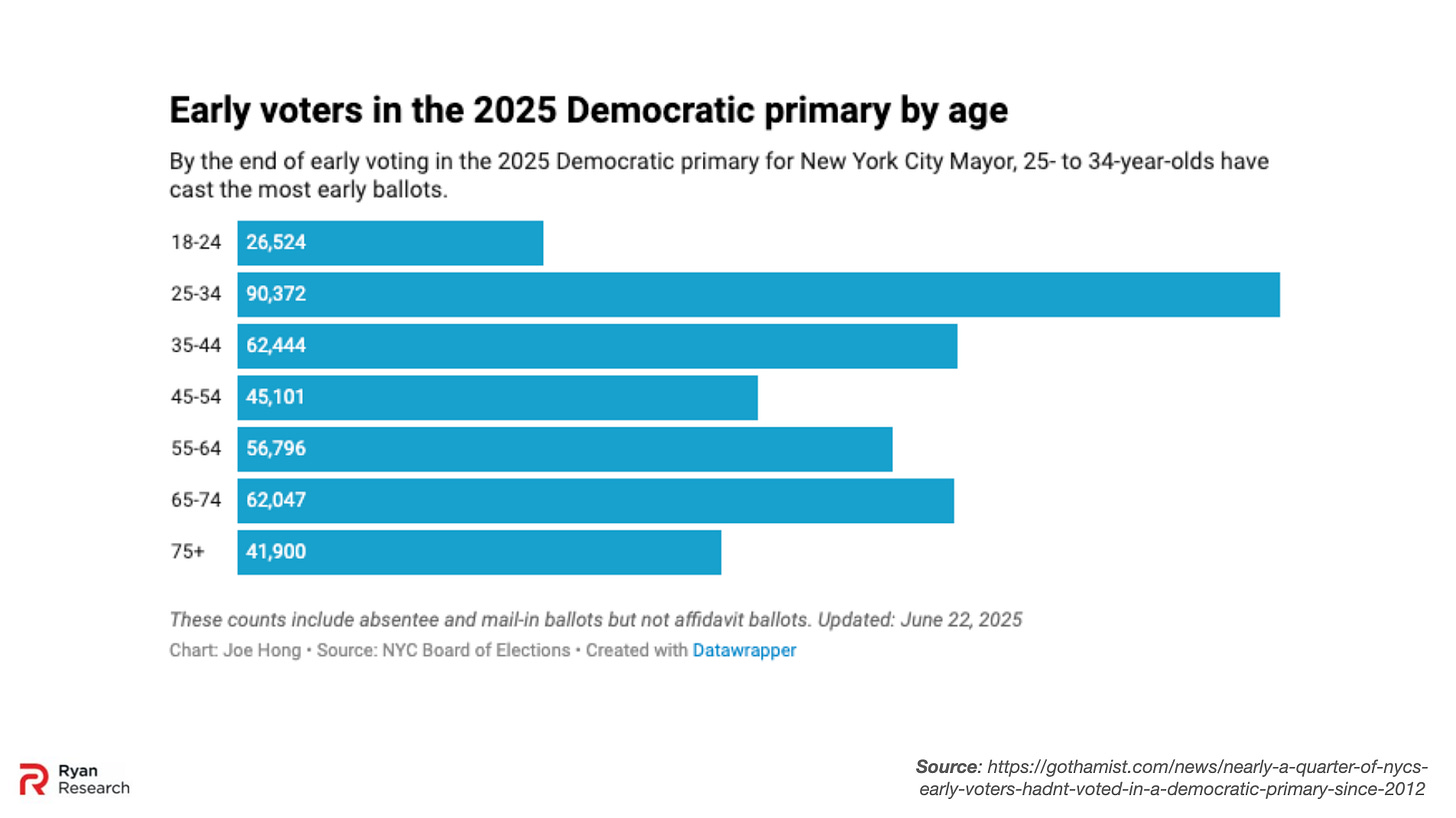
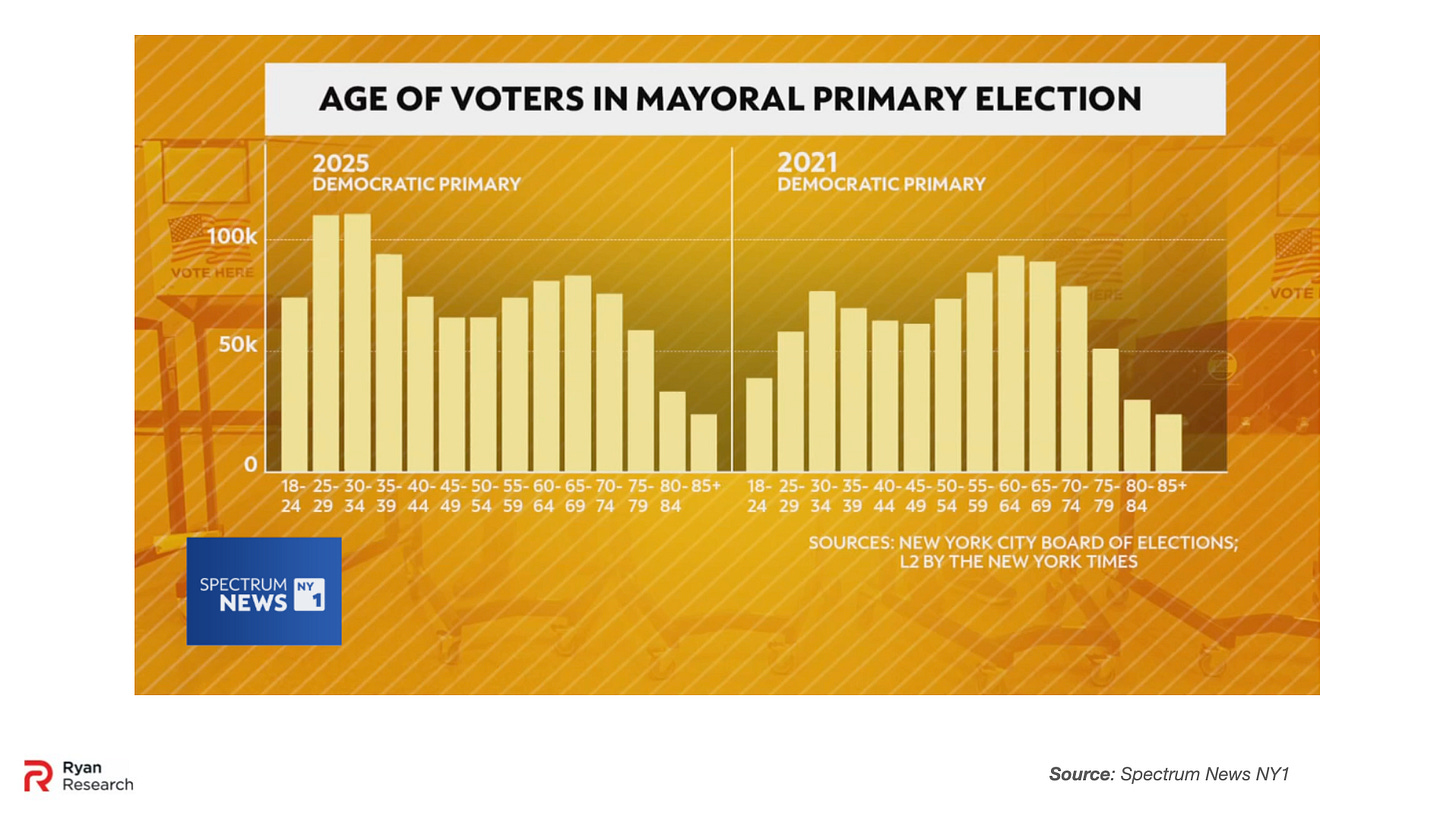

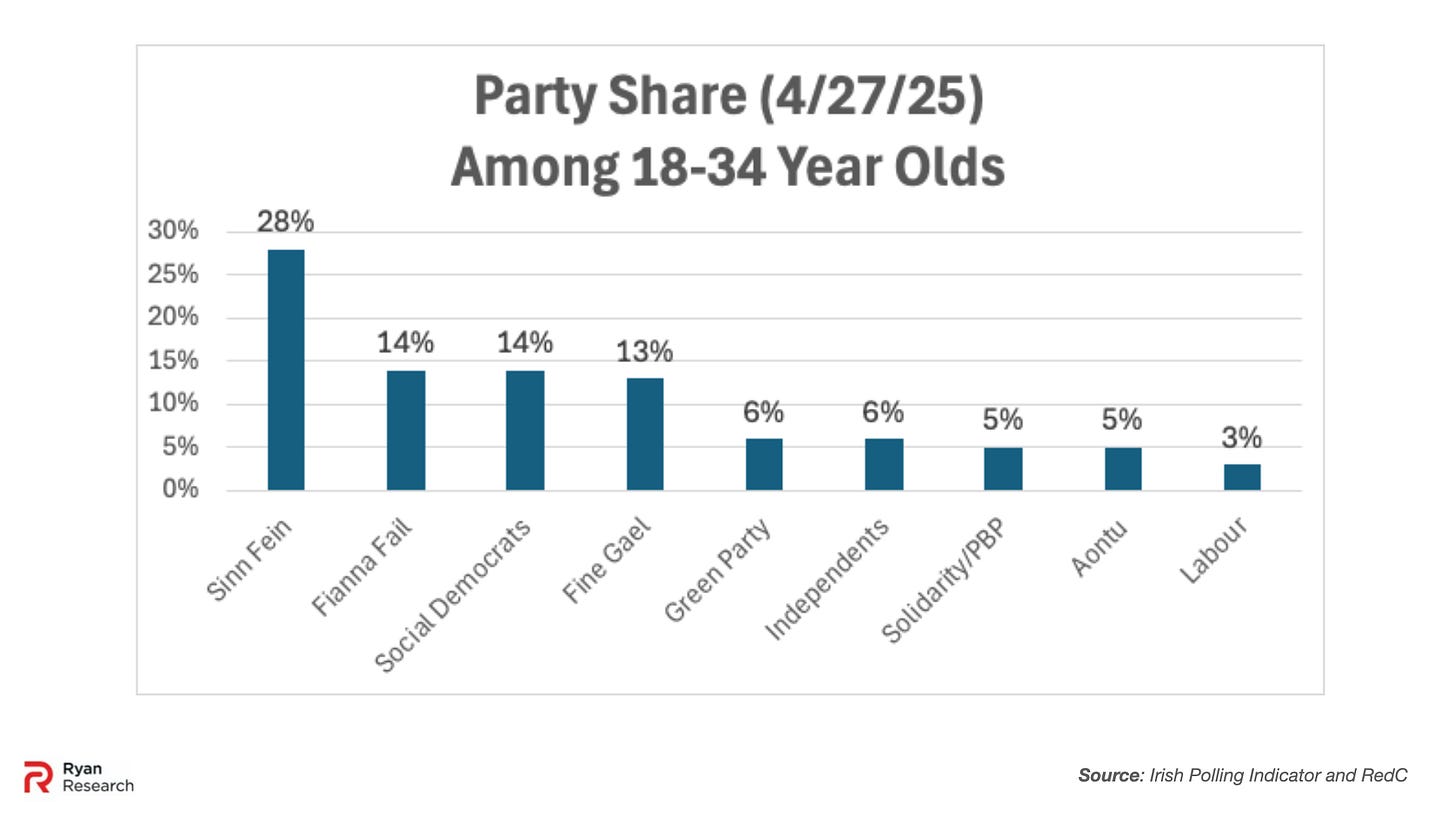
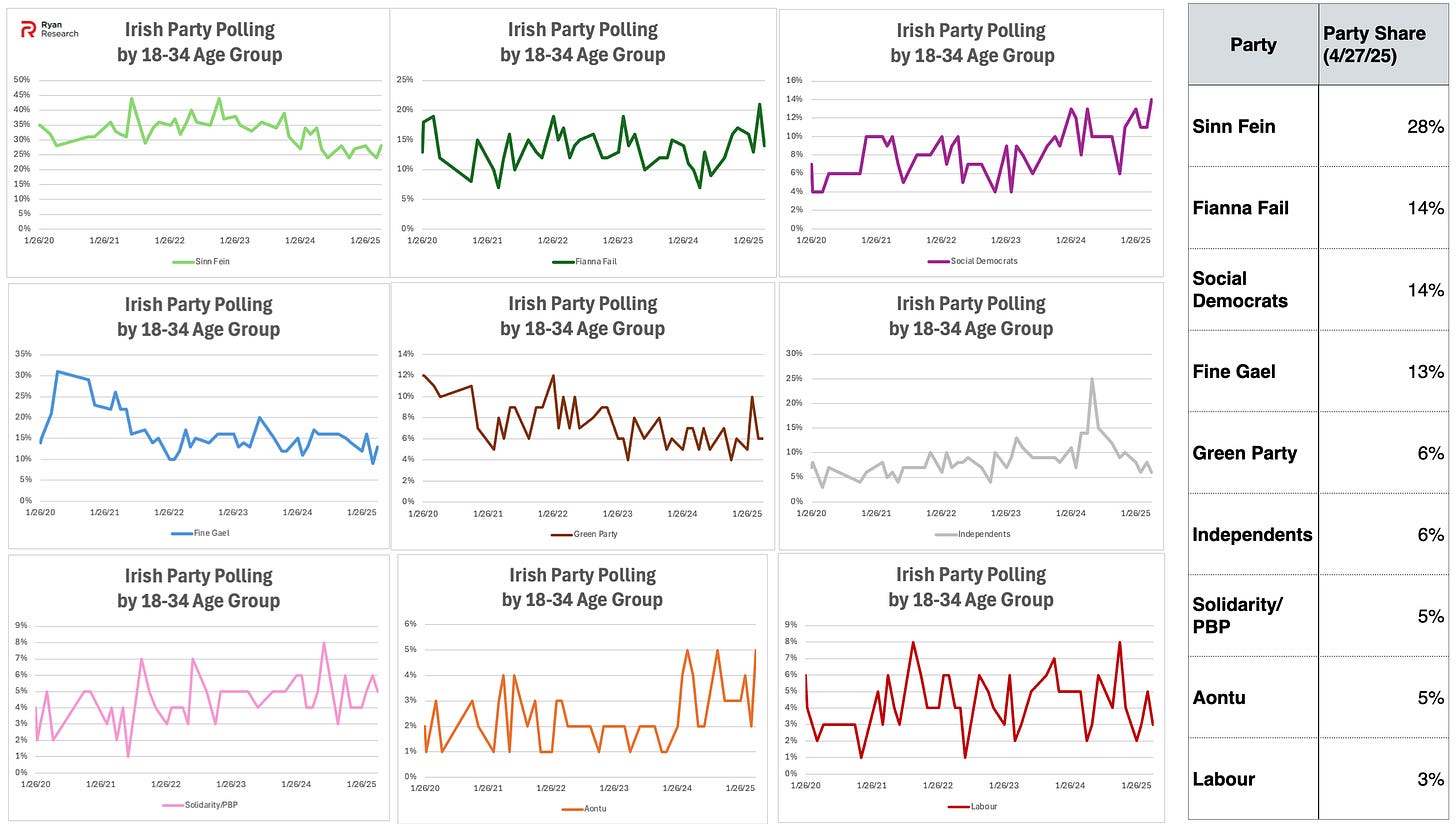
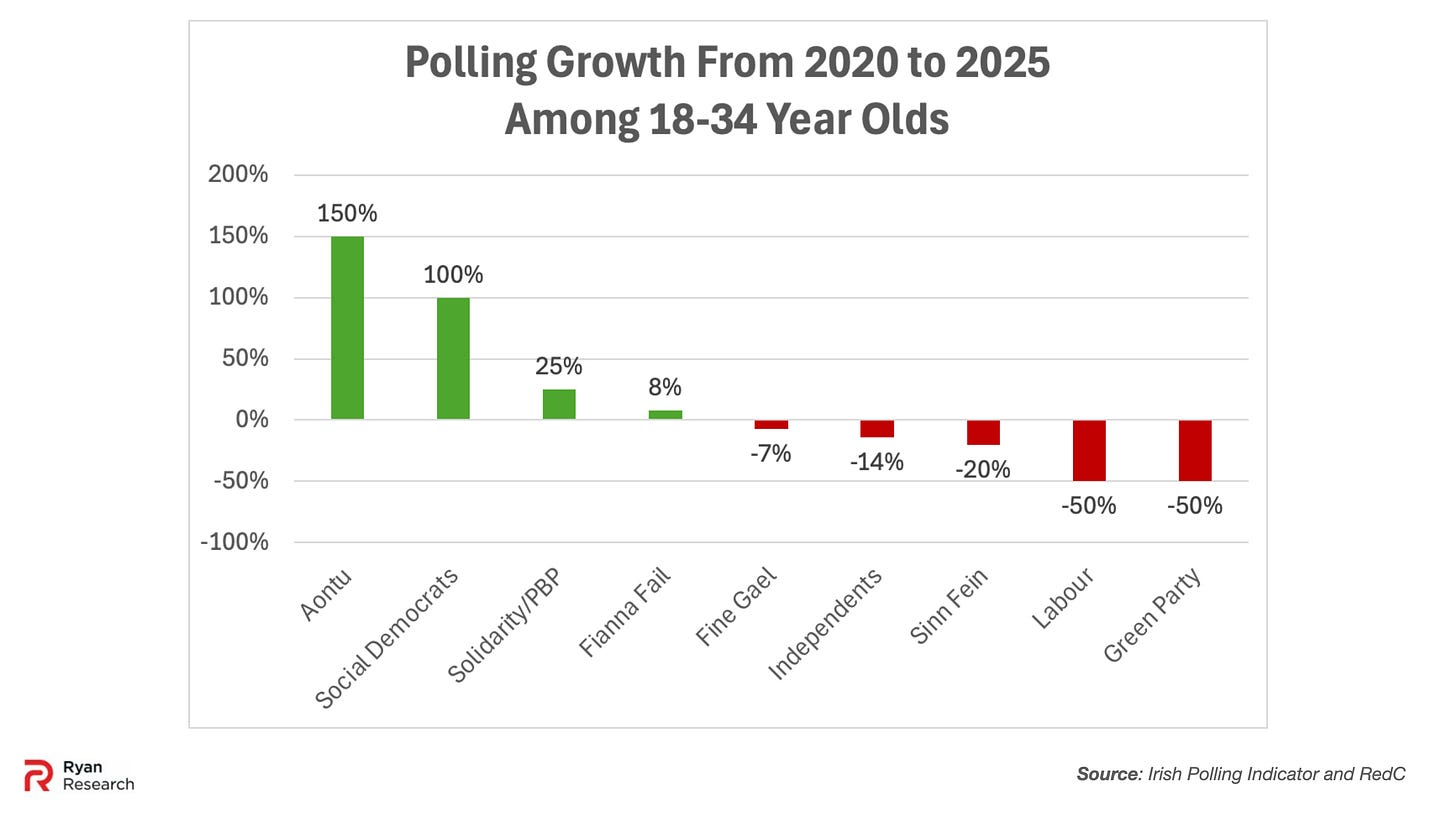

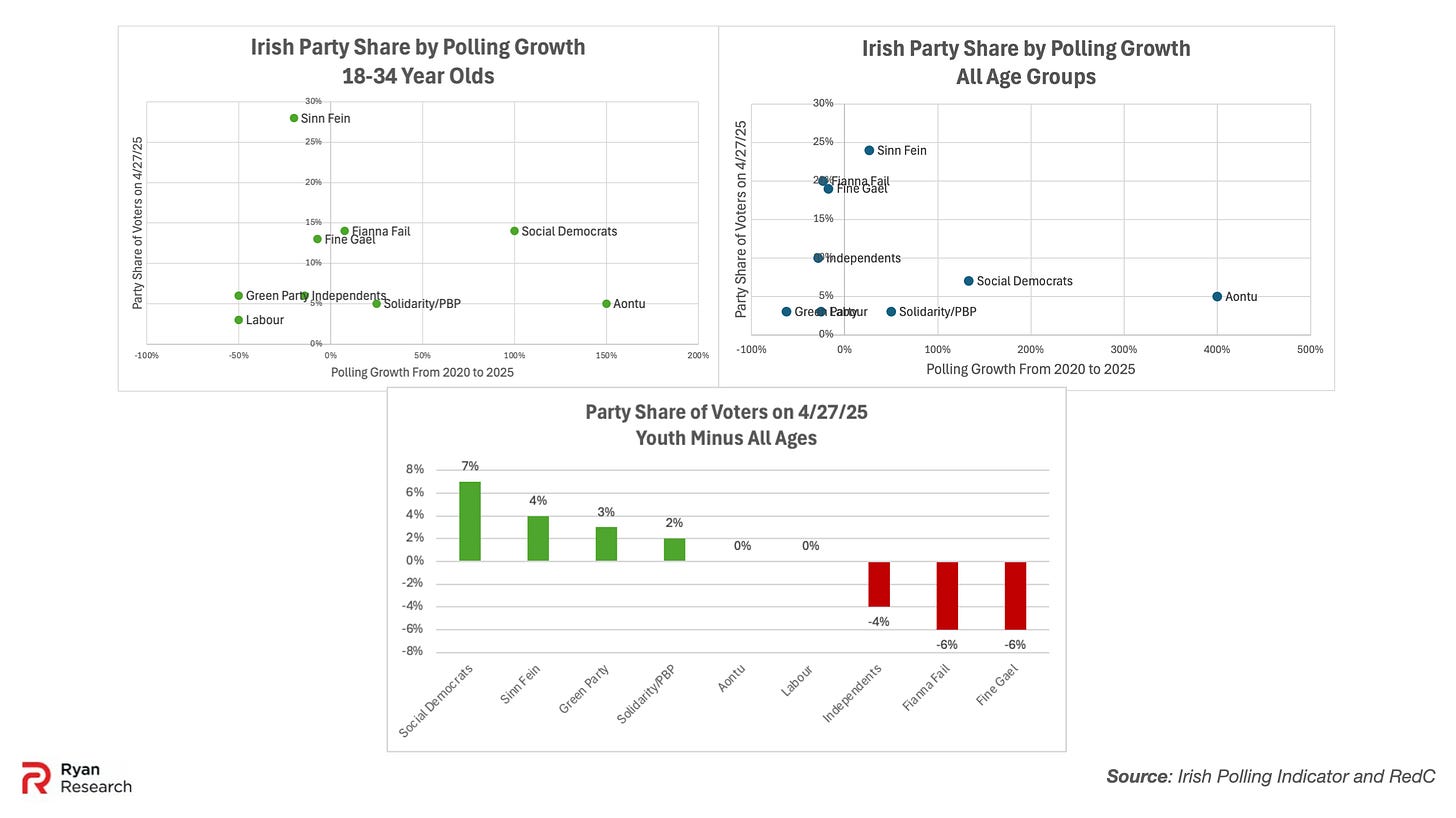
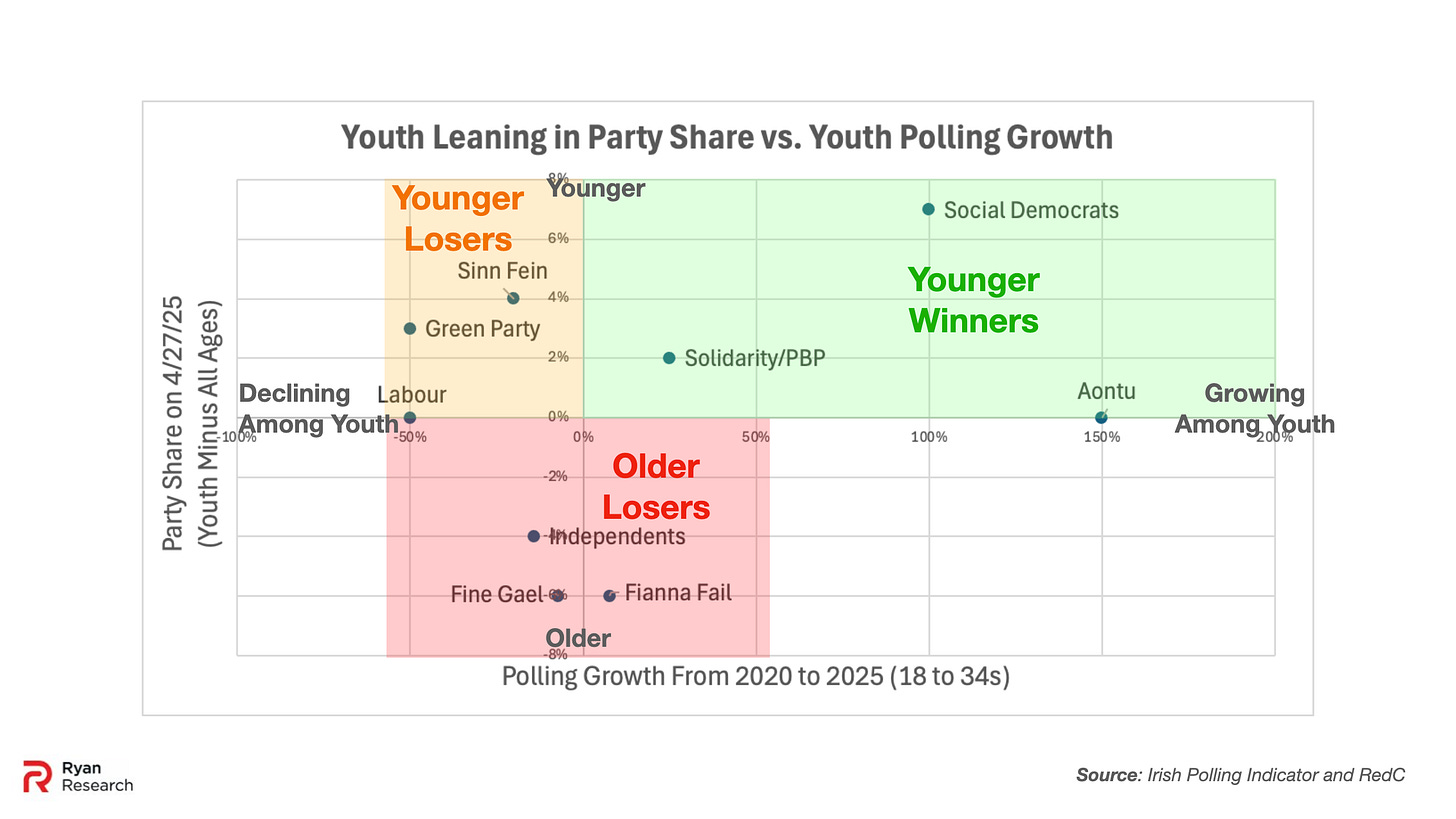
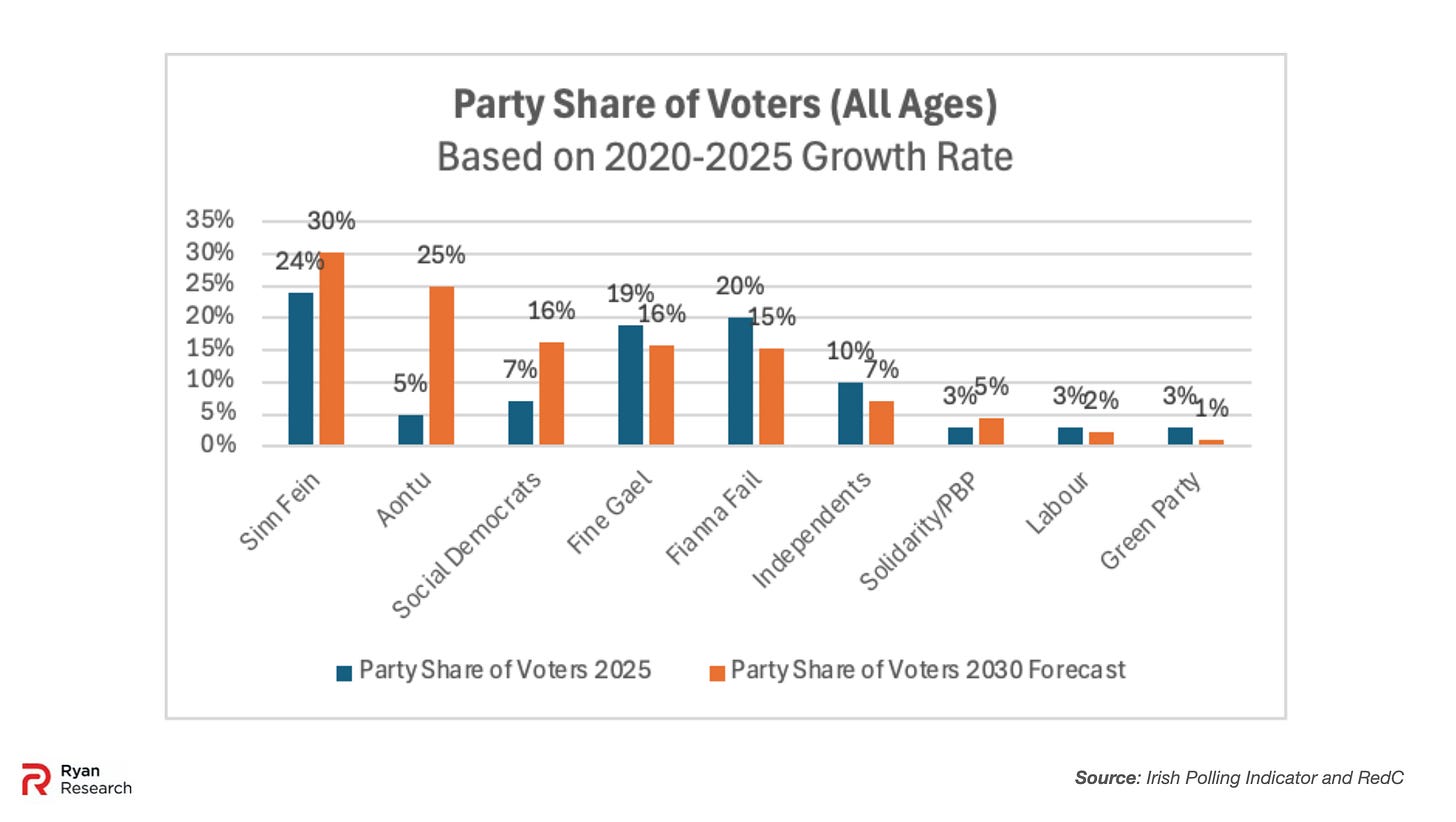
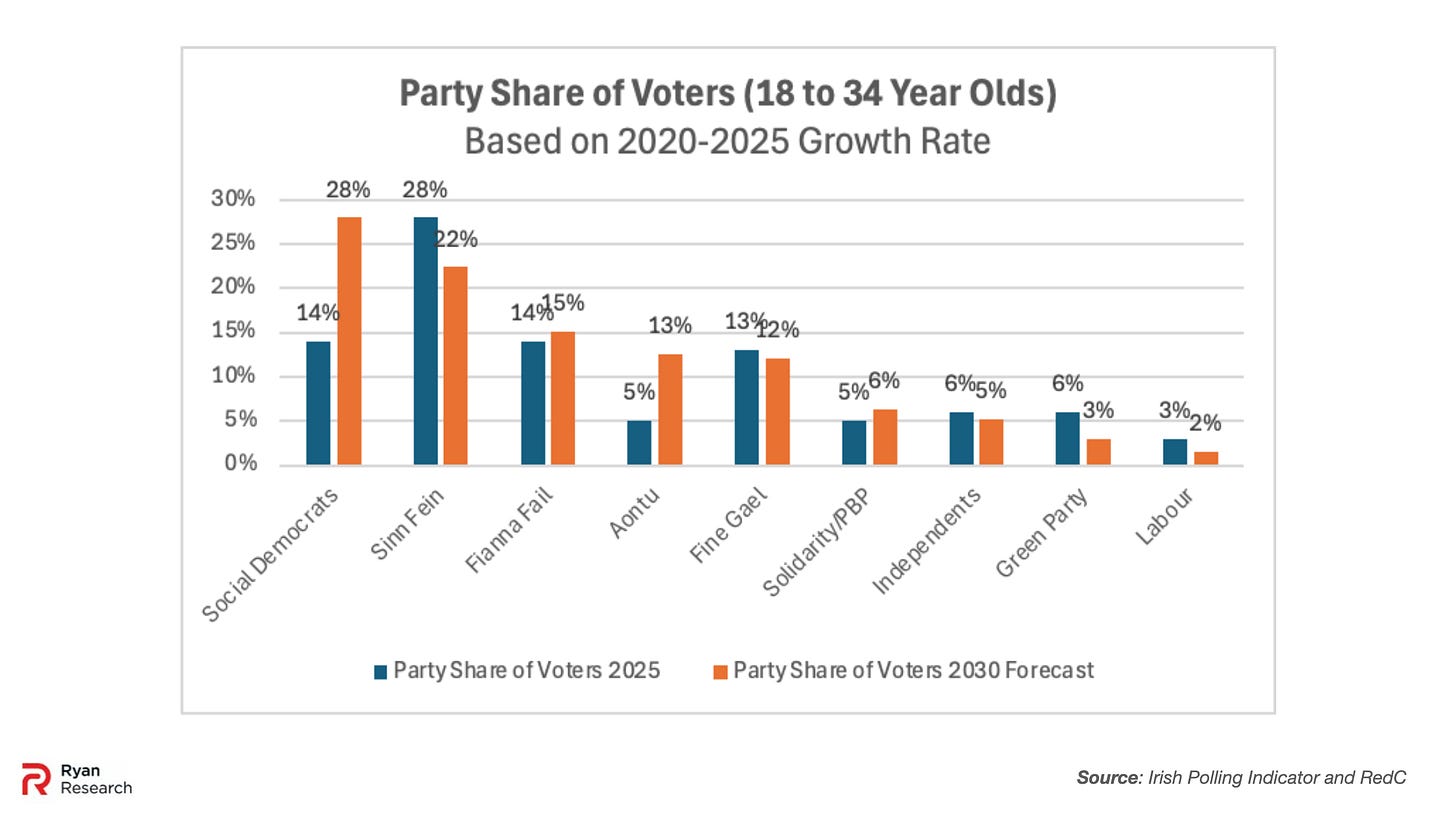
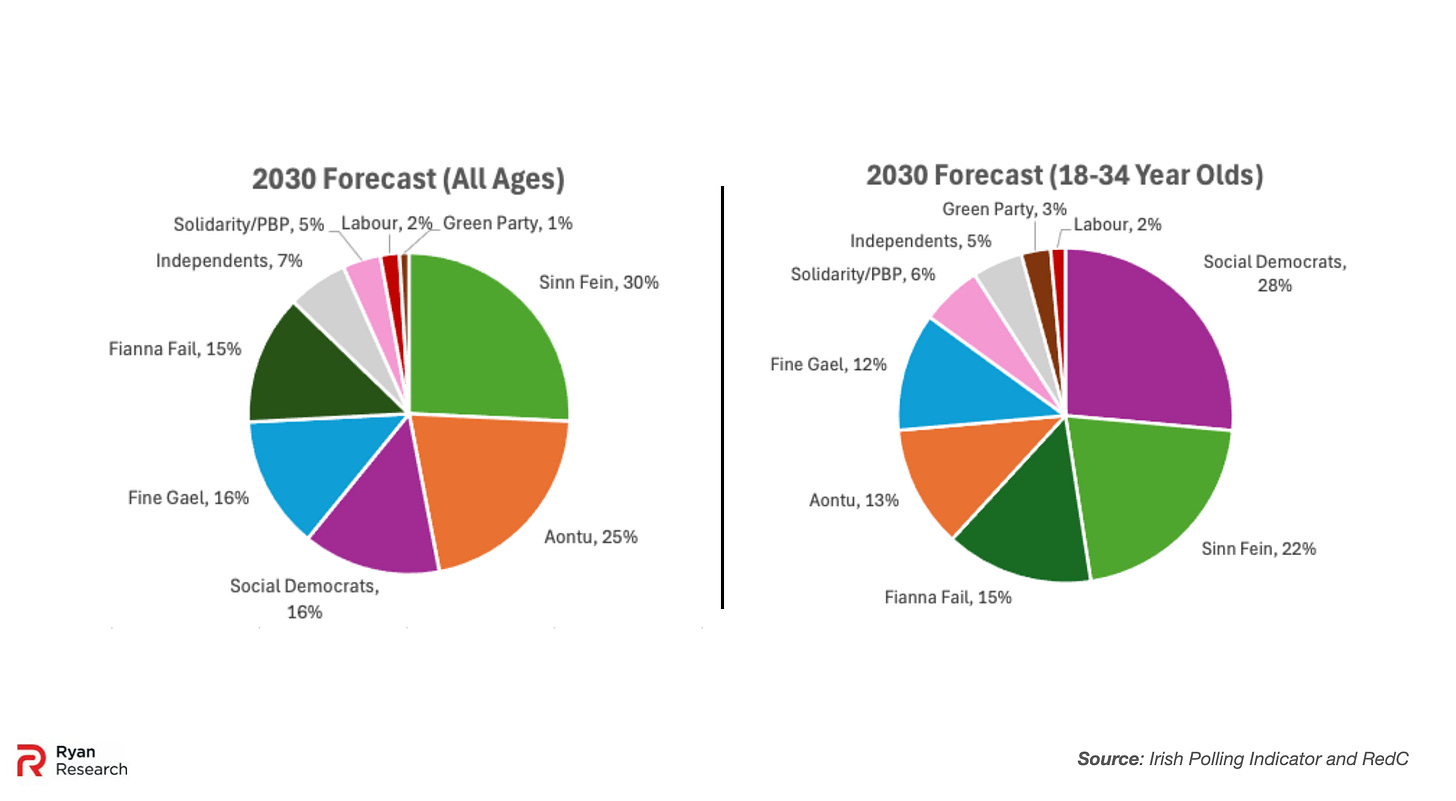
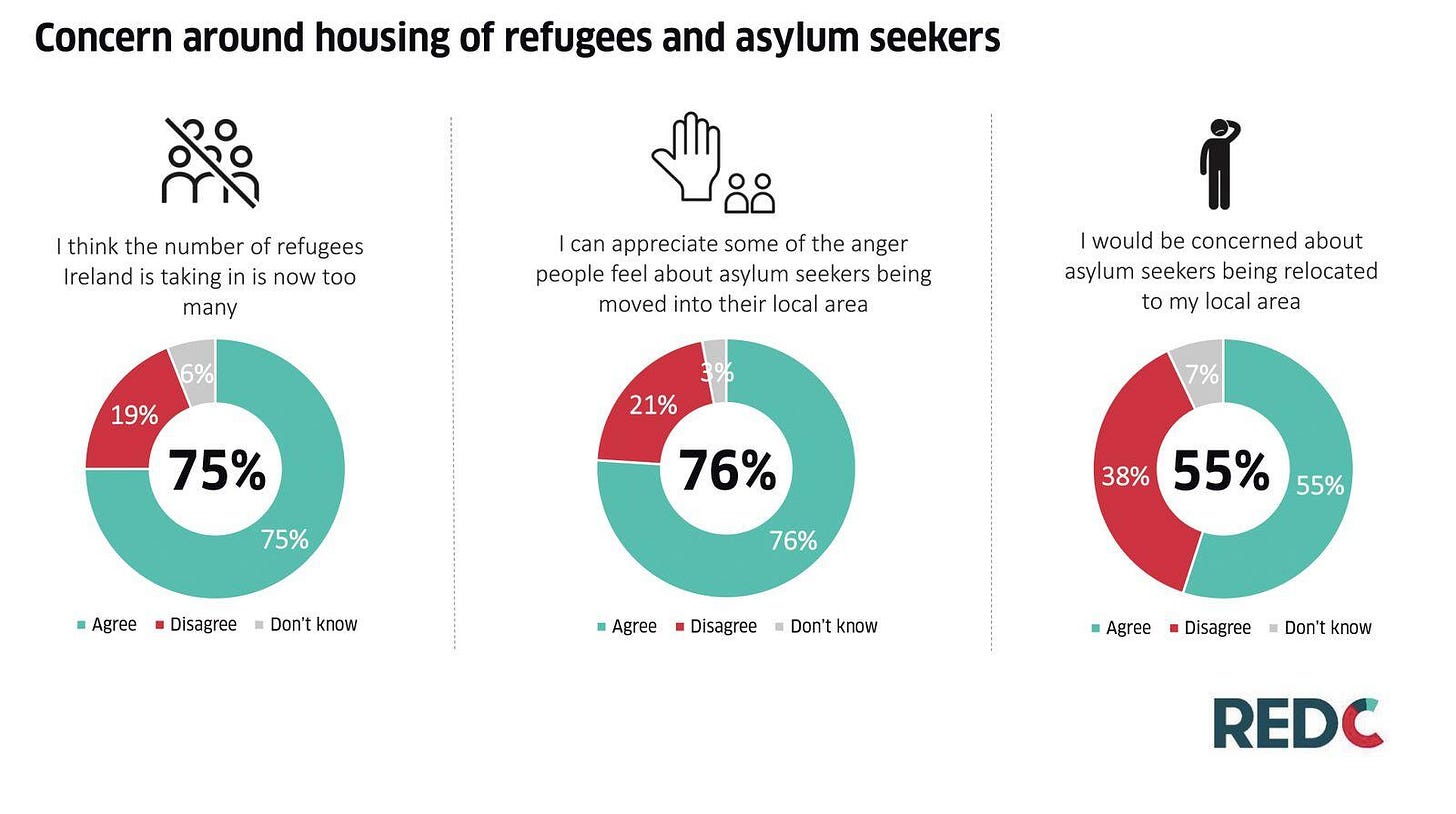
Hard to see a big future for SocDems, as it is too broad a church, with far left immigration lovers like Gary Gannon and housing guru Rory Hearne, who was a founder member of Trotskyite People Before Profit aka Socialist Workers Party. He then joined Labour, briefly. Another immigration enthusiast. No way would these people adopt the Danish immigration pick, held by left and right in Denmark. They love their virtue signalling too much.
Their surge in the polls started by the election as leader of Holly Cairns, aka Hollymania, a youthful, attractive, articulate liberal Wrst Cork Protestant and strong abortion supporter. She is on maternity leave. Almost all SS reps are holders of standard D4 opinions on Green agenda, immigration, secularism, etc.
Gibney is more radical. Only party capable of a Danish model is a directive from Connolly House politburo to SF on reading the polls. A left field option would be FG dumping the incompetent out of his depth Harris, and appointing the steely Jennifer Carroll McNeill as leader. It would appeal to what is left of their base, and put clear blue water between them and other parties, being able to sell it as a modern, compassionate Danish policy, as opposed to far right.